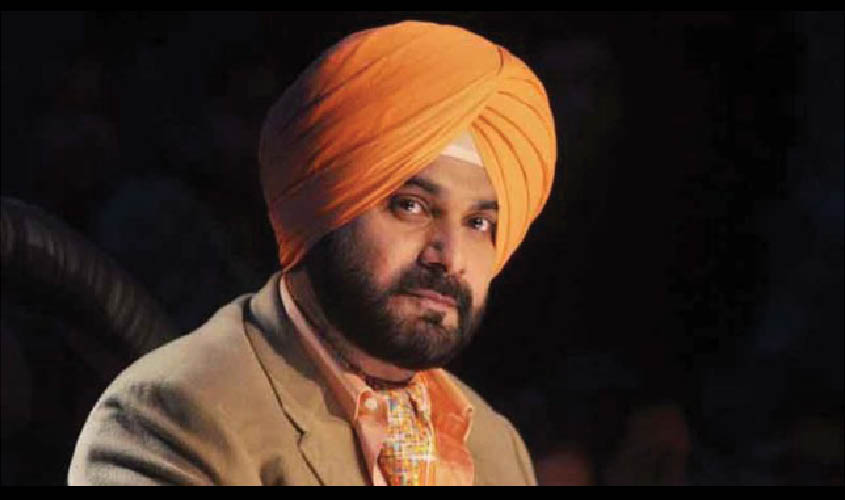Ignorance is sin, but in this case, it is suicidal. Sidhu has betrayed his ignorance of history and facts.
Navjot Singh Sidhu, the cricketer-cum-comedian turned politician seems to be conveniently standing on two boats, India and Pakistan, with his loyalty shifted to the rogue state.
Ignorance is sin, but in this case, it is suicidal. Sidhu, loved by generations of Indians for his earthy humour and Sidhu Vani, has, by his recent actions, betrayed his complete ignorance of history and facts on Pakistan and India-Pakistan relations. It would do him good to learn some hard facts about Pakistan.
First, why was Pakistan created? It was created on the basis of two-nation theory when the Muslims of India under the leadership of M.A. Jinnah and the Muslim League asserted their separate identity, distinct from the Indian/Hindu nation and opted out of it. The creation of an Islamic state under the name of Pakistan within the natural boundaries of India—the basis on which the demand for Partition of India was raised—is the bitter and painful fact of history which cannot be ignored. Even today, it is this anti-India sentiment that is sustaining the failed state called Pakistan.
In the case of Punjab, the whole of East Punjab up to the river Ravi including Lahore was Hindu majority. In Gurdaspur district, taken as a whole, Muslims had a very slender majority. But the part of the district east of Ravi, including the towns of Gurdaspur and Pathankot, were Hindu majority. Therefore East Punjab including Lahore had to remain with India according to the criteria laid down for Partition by the British government for the guidance of the one-man Radcliffe Commission which was to demarcate the areas to be given to Pakistan.
According to Prof Balraj Madhok, Justice Mehar Chand Mahajan, who made an irrefutable case for awarding Lahore to India before the Commission, was aware that the fate of Lahore would be decided not on the basis of facts and arguments but on the basis of political considerations. He, therefore, sent urgent messages to Prime Minister Jawaharlal Nehru to insist on keeping Lahore for India. But Nehru’s cryptic reply, “how does it matter whether a few cities go this way or that way?” came as a rude shock to Mahajan, who never forgave Nehru for this gross betrayal of India’s interests.
Partition should have been followed with the exchange of Hindu population left behind in Pakistan with the Muslim population left behind in truncated India. Jinnah was all for it. He was on record that Muslims could not co-exist with Hindus. Even B.R. Ambedkar had suggested the planned exchange of population as the “logical corollary” of Partition. But this never happened. Those who worked and voted en masse for Pakistan like the Muslims of Bihar and UP were called Mohajirs and are ill-treated even today. Pakistan’s Punjabis, whom Sidhu found to be so loving and hospitable, still rule the roost while minorities, including Ahmadiyyas, are treated worse than animals.
As regards peace, India did everything possible to make peace with Pakistan including ceding its 30% territory to 27% Pakistanis. But what has Pakistan done in return? It has only waged relentless wars on India in the name of Islamic jihad. And India has always been a loser. The full-fledged Pakistani aggression on Jammu and Kashmir in October 1947, which ended with unilateral ceasefire on 1 January 1949, resulted in the loss of 30,000 square miles of territory to Pakistan. In 1965, Indian forces regained control over Haji Peer Pass and Kargil Heights, which were under illegal occupation of the Pakistan army, and a part of Pak territory up to Sialkot and Lahore. But thanks to Soviet pressure at Tashkent, India had to return these to Pakistan for the sake of “peace and friendship”. The Tashkent Declaration also took a toll of India’s tallest Prime Minister, Lal Bahadur Shastri, who was found dead in his room at Tashkent under mysterious circumstances on the morning of 11 January 1966.
The 1971 war and the Simla Agreement thereafter converted India’s military victory into a diplomatic defeat and within a decade led Gen Zia-ul-Haq to launch Operation Topac against India. Under this operation, Pakistan not only extended full moral and material support to Khalistani separatists in Indian Punjab, but also unleashed a reign of state-sponsored terror in Kashmir Valley to challenge Kashmir’s accession to India. The religious cleansing of the valley of all Hindus including Sikhs and Kashmiri Pandits was the direct outcome. Then came Kargil, in which Mother India lost 527 of her brave sons and till today Pakistan is waging a relentless proxy war in J&K with the help of jihadists and ISIS personnel.
When it has so much money to fund terror activities in India, Pakistan anyway has enough to tackle its own problems. Sidhu need not worry about that country.
As for Punjabi affection and bonding, so gladly eulogised by Sidhu, let Pakistan display some of it by letting Pakhtoons go to Pakhtoonistan, the Baloch to Balochistan, and let Sindh and Pak-Occupied Kashmir return to India. As far as Punjab is concerned, Sidhu should know

